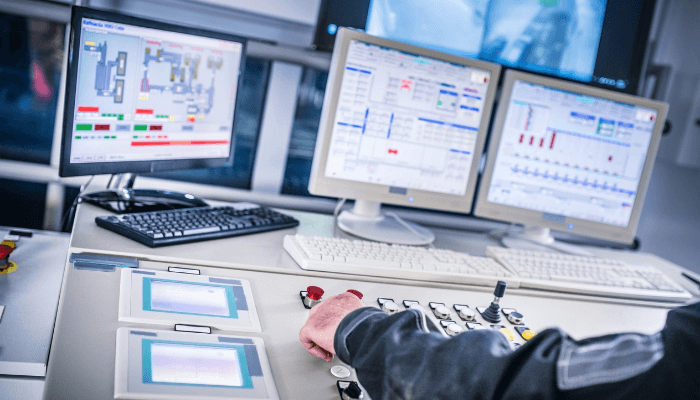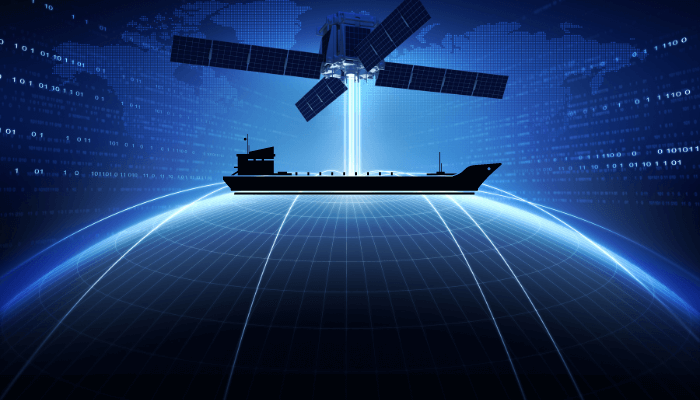What is Vessel Performance Analysis?
Ships have been treading international waters since times immemorial. Before the advent of aviation, ships were the only reliable means of transportation for interocean or intercontinental trade.
Even today, 90% of global trade is dependent on shipping. During the pandemic, when the rest of the world had come to a standstill for a brief period, cargo ships still carried on with their jobs.
With the booming population and the global markets in tandem, the ocean traffic is parlaying from time to time. The oceans are much busier than before, and thanks to innovation and advanced technologies, the routes have also opened up in almost every nook and corner of the world. The modern vessels can brave adverse scenarios like weather and harsh sea.
Technological revolutions have extensively influenced the world of shipping in computing, automation, connectivity, digitization, etc. Today, navigators do not need large wall-clock-sized compasses to keep track of their routes. Everything can be monitored on a small computer screen with fool-proof accuracy.
Thanks to automation, advanced systems can control several aspects of a vessel’s voyage, including manoeuvring and course keeping. If Titanic had sailed today, it could have avoided the disaster, owing to precision detecting and sensors alerting an obstacle’s control centre from yards away. Fuel consumption is also continuously monitored.
Now, let us have an overview of vessel performance analysis, which is also a crucial milestone in shipping where computation and data management plays a pivotal role.
A Brief into Data Analysis
Before moving into vessel performance analysis, it is important to look at data analysis briefly.
Data Analysis belongs to the branch of Data Science, computational science, and technology of exploring, exploiting, and working with large volumes of data with applications in the real world.
Data Science essentially has the following broad domains-
- Data Analysis, Visualization, and Engineering
- Machine Learning
- Artificial Intelligence
We won’t delve much into machine learning and artificial intelligence concepts. Still, it can be simply said that they are advanced levels of data science applications that utilize high-level computing methods to solve complex real-world problems without much effort.
Data analysis deals with large sets or pools of data to extract required knowledge for multiple uses. The first step of data analysis involves data visualization, inspecting, and observing available data. After that, useful information is extracted from raw data for gaining insights. Data engineering is the last step, a different arena often followed after data analysis. It involves engineering data for further uses by applying programming languages, computational software, and technologies for managing algorithms and achieving the necessary targets using the available data sets.
Vessel Performance Analysis
Any vessel under operation is subject to an extensive range of parameters. They involve everything from fuel consumption and efficiency to voyage timings, including idle time, port calls, engine performance, speeds, weather conditions, trim and stability information, propulsion data, hull and propeller conditions, and so on.
In earlier times, most of this information was either unrecorded or somewhat manually recorded to be kept in log books as and when required. However, with the advent of computational and communication technologies, several shipowners and chartering parties became interested in keeping a close watch on all such particulars on a real-time basis. The reasons for this were several: at the end of the day, all companies or owners seek to achieve the best possible efficiency to minimize their expenses like fuel consumption without compromising on the standards.
For the same reason, if all the related data from their vessels could be made available easily, the overall performance could be perceived. For any kind of shortfall, ways to improve efficiency can be conceived more holistically. Moreover, the latest requirements on emission regulations have also augmented the necessity for monitoring vessels’ performance to monitor the emissions and ensure that they are not being violated as per norms. Also, monitoring vessels is essential for maritime safety, given the increase in accidents due to ocean traffic and inclement weather conditions.
In a broad sense, the domain of vessel performance analysis encompasses the following three areas:
- Vessel Performance Monitoring and Reporting
- Analysis
- Improvement
The first and foremost step is vessel performance monitoring. This essentially involves a two-way communication system between the vessel and the operator, owner, or chartering company regarding the vessel’s time-to-time performance and operational data. All crucial information such as fuel consumption, engine performance, propulsion data, routes, voyage and idle time, port schedules, cargo information, ballast information, and weather reports is communicated from the vessel or vessels to the concerned stakeholders.
The data is assimilated, processed, stored, and further exploited for analysis and feedback. The feedback information from the ship is reverted to the vessel or vessels, and any inputs regarding performance improvement or advisory measures are communicated, which are once again incorporated. This way, the vessel operation can be optimized by leveraging onboard data in real-time. The monitoring can be performed for a collective number of ships or the entire fleet, known as fleet performance monitoring.
Analysis immediately follows vessel performance monitoring. The data processed from the vessel’s end is analyzed to understand the vessel’s current status better. The insights derived from the vessel’s datasets over a certain period are compiled into the ‘Vessel Performance Analysis/ Evaluation Report.’
The insights from the vessels’ processed data insights are further conceived as ‘Key Performance Indicators or KPIs. This is usually tallied with the standard or desired KPIs set as benchmarks. The differences between the achieved and benchmark parameters are carefully evaluated and communicated to the vessel for reference.
Analyzing any discrepancies or inconsistencies regarding ways to improve operation measures is essential. This is what is known as ‘vessel optimization analysis.’ For example, a vessel is in a specific trim condition and en route to a certain port of call. However, the desired fuel efficiency is not achieved per slated targets for optimized consumption. Furthermore, the engine is of high performance, and since there is a fixed timetable, the speed cannot be reduced. So, at this juncture, adjusting the trim by ballasting to suitable levels can help improve fuel efficiency at almost no cost and with zero effort.
The vessel optimization analyst assesses this, which is conveyed to the vessel after final confirmation using high-end computational techniques. Similarly, suppose there is a possibility of adverse weather conditions along a vessel’s charter route. This can lead to high fuel consumption and voyage delay and jeopardize the ship’s safety. Though the information related to the weather conditions can be easily supplied from meteorological systems installed on-board or other concerned bodies specialized in weather reporting, alternative route planning is also crucial. This can also be managed by the vessel performance along with related data like timing, fuel consumption, and other particulars for alternate routes. So, route planning can lead to considerable benefits from a safety perspective.
Performance improvement and vessel performance management constantly improve the yardsticks of operation and performance of a vessel using crucial insights from analysis. They provide management consultation and advisories for quality control and maximum performance.
As said before, the overall process of vessel performance and optimization is mostly done by chartering, operating, or owner companies. However, due to increasingly high demand, several third-party organizations, firms, and even classification societies are being given the responsibility.
The best practices for vessel performance and optimization depend on the available technologies and the promptness with which it takes place. Voyage companies or third-party organizations are spending a lot in terms of assets as well as an efficient workforce in procuring and developing high-end software to achieve the best results for performance optimization.
The technological infrastructure installed on vessels is equally important for accurate information communication for performance analysis and optimization. For visualization and data analysis, simple tools like Microsoft tools or languages like Python or Java were used earlier and are still being used to some extent. But over recent times, advanced holistic software is being used widely for analysis with minimal time and reduced effort.
You might also like to read
- Understanding Different Types Of Manoeuvres of a Vessel
-
How Ships Sail Against The Wind – Impacts Of Wind Action On A Vessel
-
What is Electronic Chart Display and Information System (ECDIS)?
Disclaimer: The authors’ views expressed in this article do not necessarily reflect the views of Marine Insight. Data and charts, if used, in the article have been sourced from available information and have not been authenticated by any statutory authority. The author and Marine Insight do not claim it to be accurate nor accept any responsibility for the same. The views constitute only the opinions and do not constitute any guidelines or recommendations on any course of action to be followed by the reader.
The article or images cannot be reproduced, copied, shared, or used in any form without the permission of the author and Marine Insight.
Do you have info to share with us ? Suggest a correction
Latest Maritime Knowledge Articles You Would Like:
Subscribe To Our Newsletters
By subscribing, you agree to our Privacy Policy and may receive occasional deal communications; you can unsubscribe anytime.
Web Stories

About Author
Subhodeep is a Naval Architecture and Ocean Engineering graduate. Interested in the intricacies of marine structures and goal-based design aspects, he is dedicated to sharing and propagation of common technical knowledge within this sector, which, at this very moment, requires a turnabout to flourish back to its old glory.























